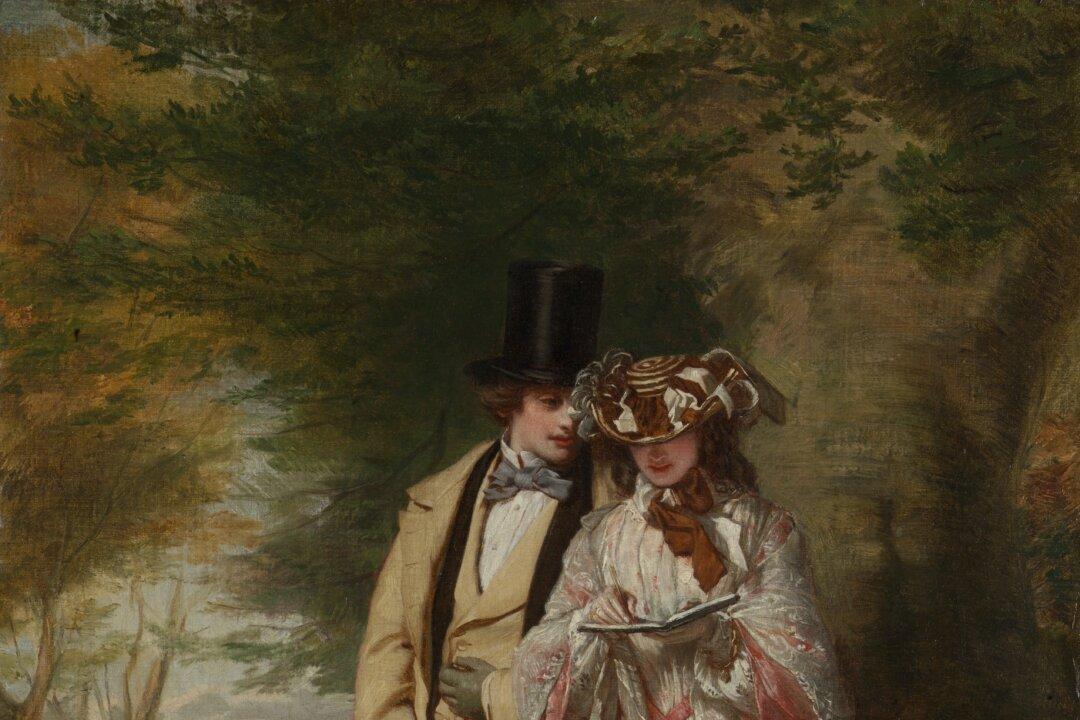“The Two Central Figures in ‘Derby Day’” by William Powell Frith is a small painting whose subject and title are associated with the artist’s much larger work; the man and woman who share a solitary moment in this painting are central to “Derby Day,” Frith’s renowned 1858 painting. In this smaller study, completed two years after his larger work, the sharply detailed pair stand out against a romantic natural backdrop. Perhaps it is after their trip to the derby, and she is writing down recollections of the day. It is a warm scene that invites the viewer to imagine what the young man may be whispering or to reflect on summery moments in one’s own life.
Oddly enough, besides the replicated pose and dress of the characters, this piece is very dissimilar to the larger painting in which they find themselves. Alone in nature, they seem to share a peaceful, meaningful moment. By contrast, their appearance in “Derby Day” is amid a chaotic scene of hundreds of other figures who attend a crowded derby in England.





